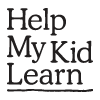What to do with this activity?
It takes time to learn that 2 means two things and 5 means five things, and so on. Count out loud and use numbers with your child whenever you can.
Mealtime can provide lots of opportunities to talk numbers with your child. For instance:
- Set the table with 1 knife, 1 fork, 1 spoon for each person.
- How many potatoes, or pieces of pizza are there? Count them out.
- How many people are going to eat the food?
- How many fish fingers does each person get?
Birthdays are important for numbers of candles, and numbers on cards.
If your child is ready, help them to play this counting game with underwater creatures from Topmarks. Choose the version with numbers 1 to 5.
You could also make a number book together. Cut out pictures from old magazines or simple shapes and stick 1, 2, 3 and so on numbers of objects on a page.
-
Why am I doing this?
Maths is more than working with numbers. It also consists of shape and space, patterns, measuring – things you do and come across in everyday life. When children begin to learn formal maths at school, they are building on a foundation of early numeracy learning from home. Even though they may not even be aware of it, parents and children engage in numeracy activity as part of their everyday lives.
-
How can I do more?
Always teach numbers in a natural way through everyday activities and play. Count steps on a stairs, food in your shopping trolley or cows in a field. Compare things when talking big or small, long or short, older or younger and faster or slower: “You carry the small box and I’ll take the big one.” Use the words – up and down, over and under, near or far, more or less when talking to your child. Talk about the shapes of everyday things. Ask your child what shapes they can see around the room they’re in.
Rate this activity
![]()
![]()
![]()
![]()
![]()
Based on 38 reviews
How would you rate it?
1 = Poor, 5 = Great.



